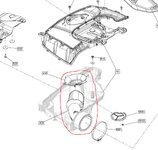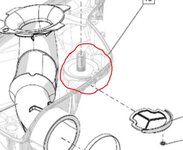D
I know this might not be the most popular subject but personally I love the turbo sounds when riding. But I dont like about loud exhaust and I have stock can. Well I bought this wrecked Freeride and have been playing with it a bit more as it has no warranty.
So what I did I removed the resonator hose from inside the airbox.

Now my sled sounds like a mod sled, you will hear intake sounds, turbo and wastegate a lot better. Personally I like it a lot more than stock and gonna remove it from my other turbo too.
If you take sledding too serious or you enjoy the sophisticated sounds of Turbo R, dont do this! Otherwise its a fun small mod to do.
So what I did I removed the resonator hose from inside the airbox.

Now my sled sounds like a mod sled, you will hear intake sounds, turbo and wastegate a lot better. Personally I like it a lot more than stock and gonna remove it from my other turbo too.
If you take sledding too serious or you enjoy the sophisticated sounds of Turbo R, dont do this! Otherwise its a fun small mod to do.



